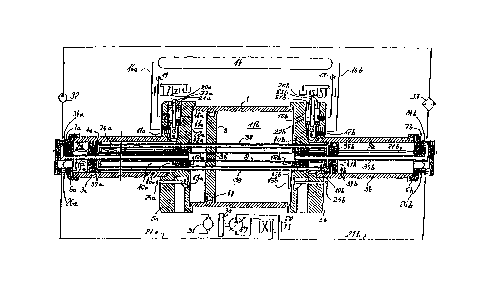Some of the information on this Web page has been provided by external sources. The Government of Canada is not responsible for the accuracy, reliability or currency of the information supplied by external sources. Users wishing to rely upon this information should consult directly with the source of the information. Content provided by external sources is not subject to official languages, privacy and accessibility requirements.
Any discrepancies in the text and image of the Claims and Abstract are due to differing posting times. Text of the Claims and Abstract are posted:
| (12) Patent Application: | (11) CA 2236746 |
|---|---|
| (54) English Title: | PNEUMO-HYDRAULIC CONVERTER FOR ENERGY STORAGE |
| (54) French Title: | CONVERTISSEUR PNEUMO-HYDRAULIQUE POUR ACCUMULER L'ENERGIE |
| Status: | Deemed Abandoned and Beyond the Period of Reinstatement - Pending Response to Notice of Disregarded Communication |
| (51) International Patent Classification (IPC): |
|
|---|---|
| (72) Inventors : |
|
| (73) Owners : |
|
| (71) Applicants : |
|
| (74) Agent: | MARKS & CLERK |
| (74) Associate agent: | |
| (45) Issued: | |
| (86) PCT Filing Date: | 1996-11-01 |
| (87) Open to Public Inspection: | 1997-05-15 |
| Examination requested: | 2001-09-07 |
| Availability of licence: | N/A |
| Dedicated to the Public: | N/A |
| (25) Language of filing: | English |
| Patent Cooperation Treaty (PCT): | Yes |
|---|---|
| (86) PCT Filing Number: | PCT/CH1996/000386 |
| (87) International Publication Number: | WO 1997017546 |
| (85) National Entry: | 1998-05-04 |
| (30) Application Priority Data: | ||||||
|---|---|---|---|---|---|---|
|
In order to maintain high efficiency close to isothermy despite high
frequencies in a pneumo-hydraulic converter with reciprocating pistons, pipe
cluster-heat exchange pipes (38) are provided in the gas working chambers of
the converter and the exchange fluid in the pipes is kept at approximately
ambient temperature. For this the gas working chambers must be arranged
axially next to one another and, in order to eliminate dead space, connected
in pairs by conical exchange valves (12a/12b) which take in the entire wall
thickness of the valve flange (5a/5b) dividing the air chambers.
Pour conserver de hauts rendements proches de l'isothermie malgré des fréquences de base élevées dans un convertisseur pneumo-hydraulique doté de pistons alternatifs, les tubes (38) d'un échangeur thermique à faisceau de tubes traversent les compartiments opérationnels contenant du gaz du convertisseur et le fluide d'échange passant par l'échangeur thermique (33) est maintenu approximativement à la température ambiante. Pour ce faire, les compartiments opérationnels contenant du gaz doivent être axialement juxtaposés et raccordés par paires au moyen de soupapes d'échange coniques (12a/212b) pour éviter un espace mort, lesdites soupapes occupant toute l'épaisseur de la paroi du rebord de soupape (5a/5b) séparant les compartiments renfermant de l'air.
Note: Claims are shown in the official language in which they were submitted.
Note: Descriptions are shown in the official language in which they were submitted.

2024-08-01:As part of the Next Generation Patents (NGP) transition, the Canadian Patents Database (CPD) now contains a more detailed Event History, which replicates the Event Log of our new back-office solution.
Please note that "Inactive:" events refers to events no longer in use in our new back-office solution.
For a clearer understanding of the status of the application/patent presented on this page, the site Disclaimer , as well as the definitions for Patent , Event History , Maintenance Fee and Payment History should be consulted.
| Description | Date |
|---|---|
| Inactive: IPC from MCD | 2006-03-12 |
| Application Not Reinstated by Deadline | 2003-11-03 |
| Time Limit for Reversal Expired | 2003-11-03 |
| Deemed Abandoned - Failure to Respond to Maintenance Fee Notice | 2002-11-01 |
| Amendment Received - Voluntary Amendment | 2002-02-18 |
| Letter Sent | 2001-09-27 |
| Inactive: Entity size changed | 2001-09-20 |
| All Requirements for Examination Determined Compliant | 2001-09-07 |
| Request for Examination Requirements Determined Compliant | 2001-09-07 |
| Request for Examination Received | 2001-09-07 |
| Inactive: Notice - National entry - No RFE | 1998-10-02 |
| Amendment Received - Voluntary Amendment | 1998-09-17 |
| Filing Requirements Determined Compliant | 1998-08-20 |
| Inactive: Filing certificate correction | 1998-08-20 |
| Inactive: IPC assigned | 1998-08-04 |
| Inactive: First IPC assigned | 1998-08-04 |
| Inactive: IPC assigned | 1998-08-04 |
| Inactive: IPC assigned | 1998-08-04 |
| Classification Modified | 1998-08-04 |
| Inactive: Notice - National entry - No RFE | 1998-07-17 |
| Application Received - PCT | 1998-07-16 |
| Application Published (Open to Public Inspection) | 1997-05-15 |
| Abandonment Date | Reason | Reinstatement Date |
|---|---|---|
| 2002-11-01 |
The last payment was received on 2001-11-01
Note : If the full payment has not been received on or before the date indicated, a further fee may be required which may be one of the following
Please refer to the CIPO Patent Fees web page to see all current fee amounts.
| Fee Type | Anniversary Year | Due Date | Paid Date |
|---|---|---|---|
| Basic national fee - standard | 1998-05-04 | ||
| MF (application, 2nd anniv.) - standard | 02 | 1998-11-02 | 1998-10-15 |
| MF (application, 3rd anniv.) - standard | 03 | 1999-11-01 | 1999-10-21 |
| MF (application, 4th anniv.) - standard | 04 | 2000-11-01 | 2000-10-19 |
| Request for examination - small | 2001-09-07 | ||
| MF (application, 5th anniv.) - small | 05 | 2001-11-01 | 2001-11-01 |
Note: Records showing the ownership history in alphabetical order.
| Current Owners on Record |
|---|
| IVAN CYPHELLY |
| Past Owners on Record |
|---|
| None |